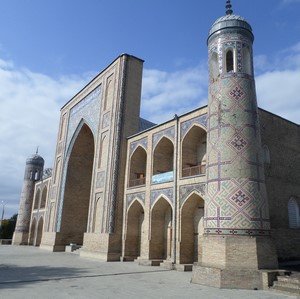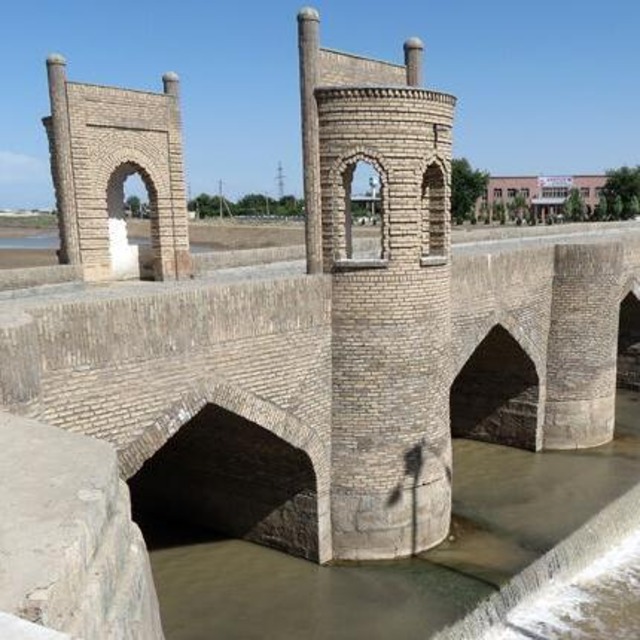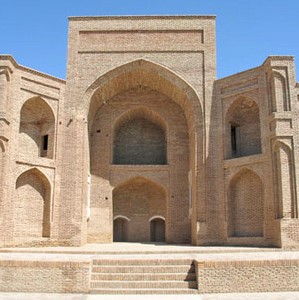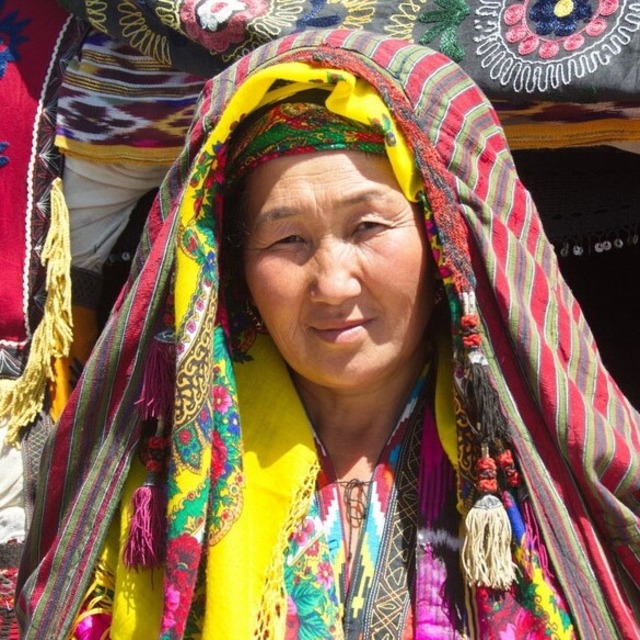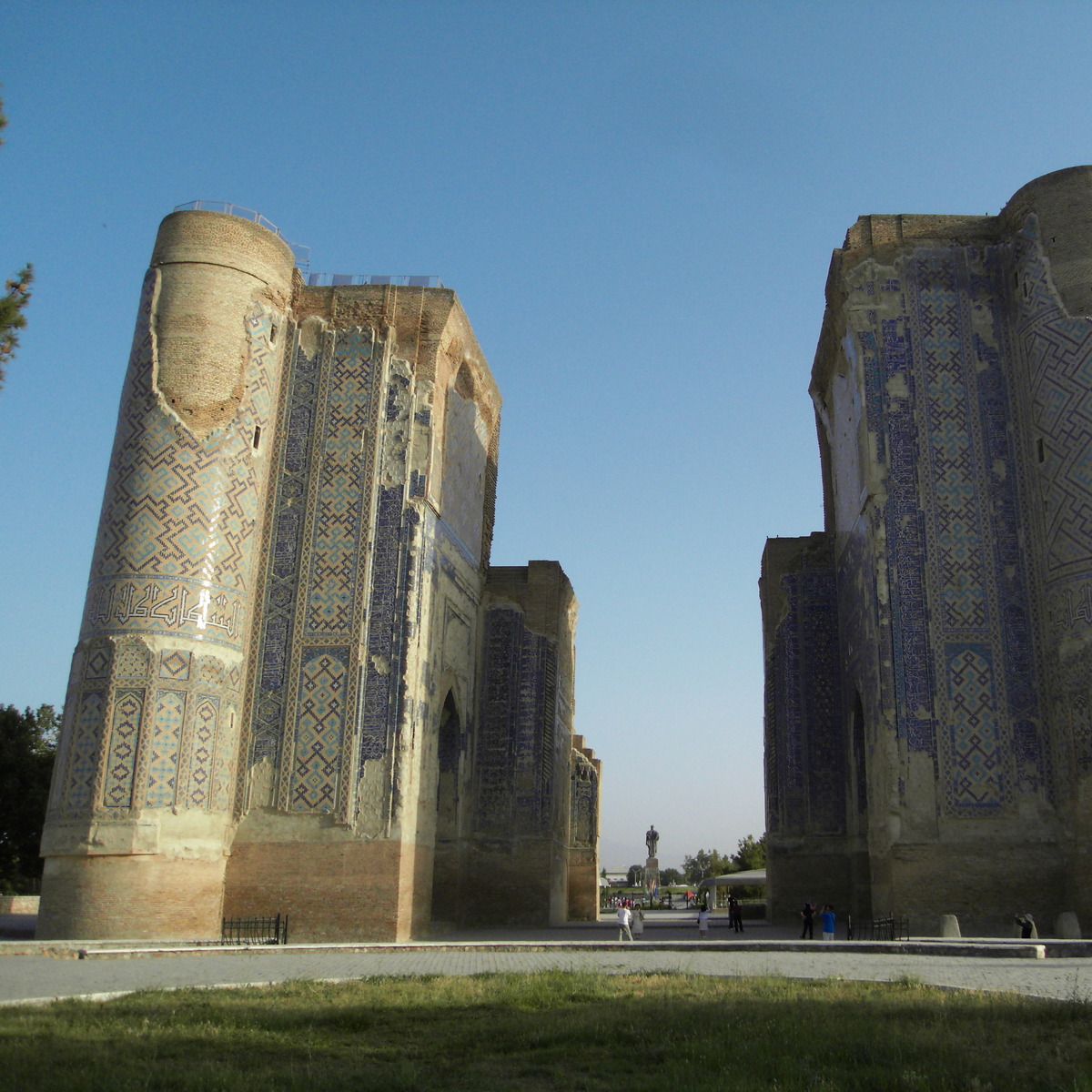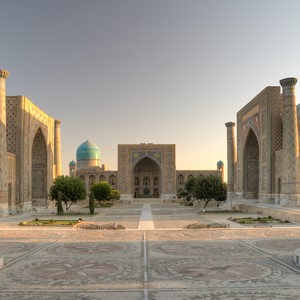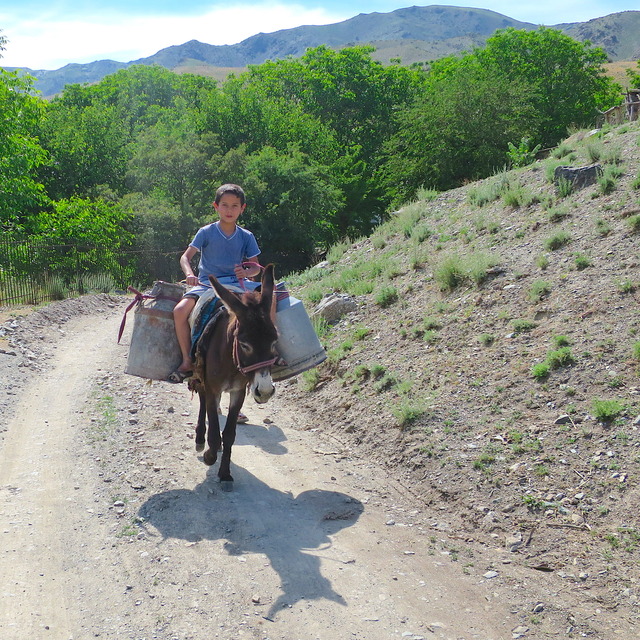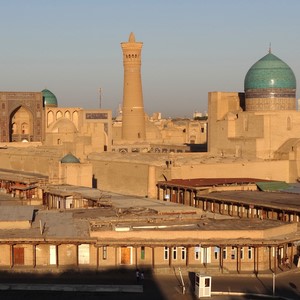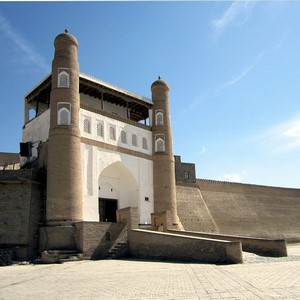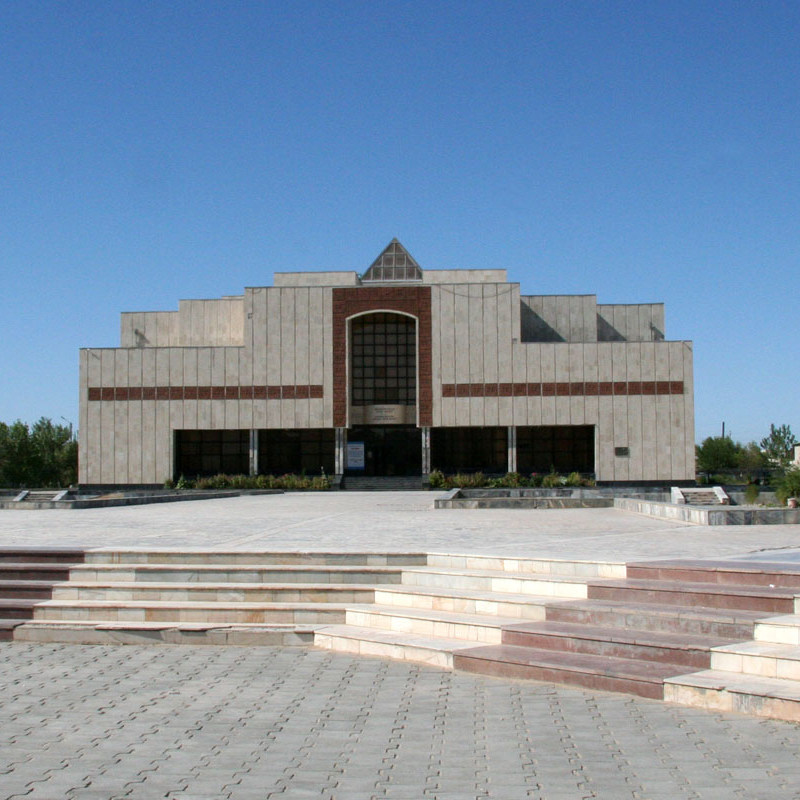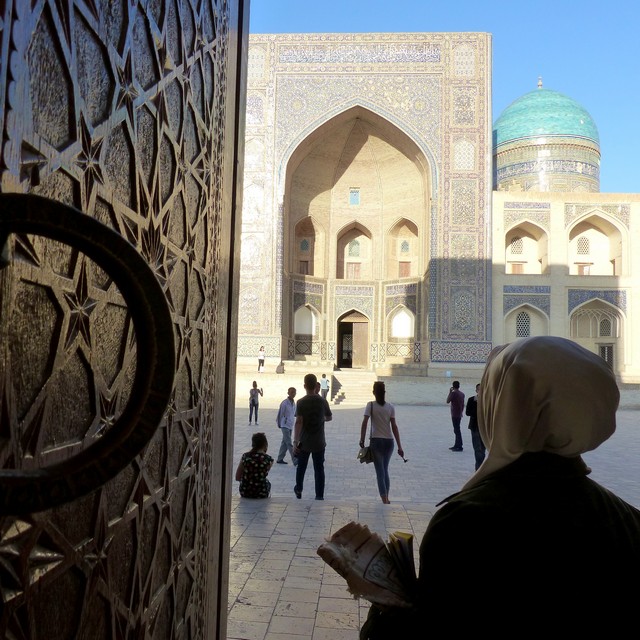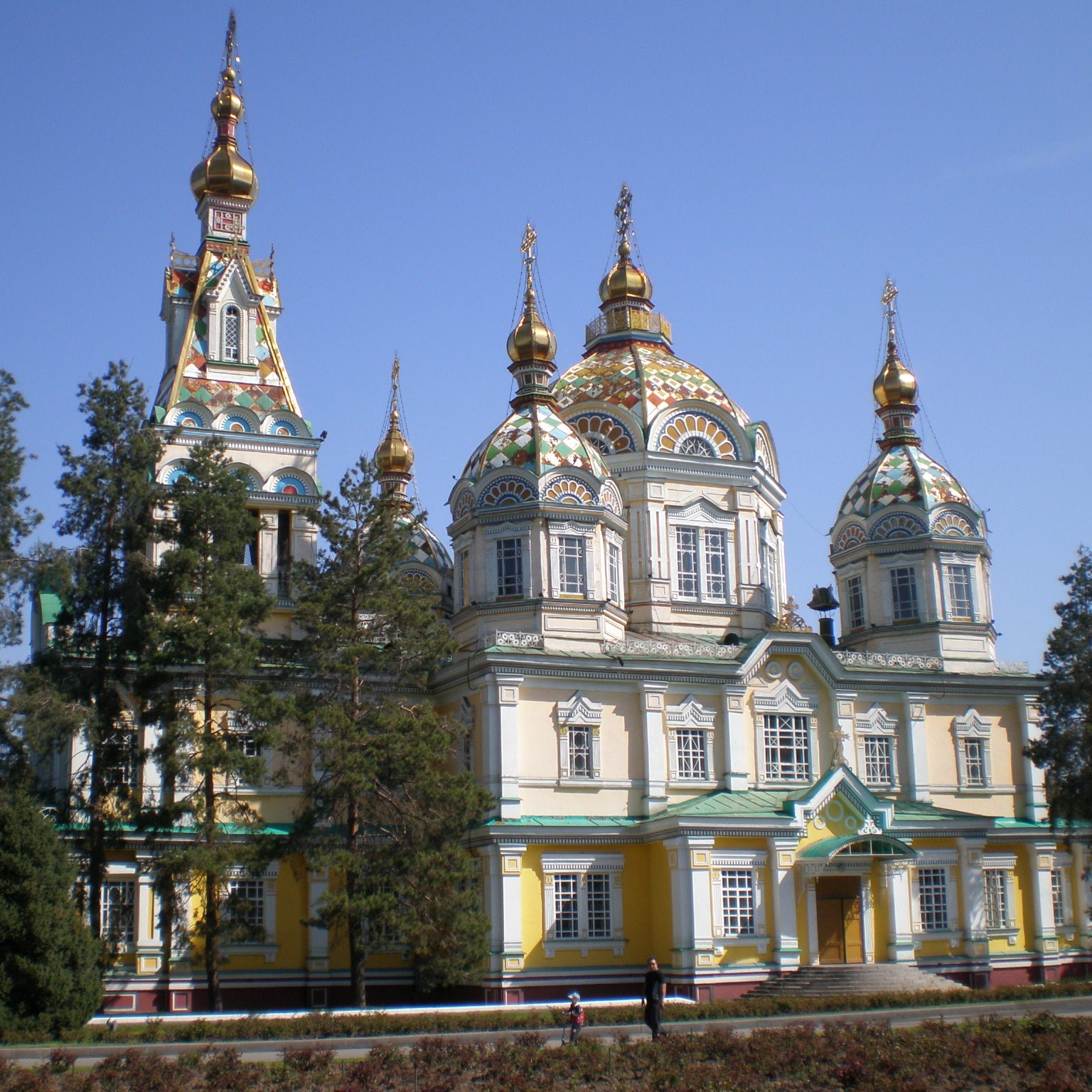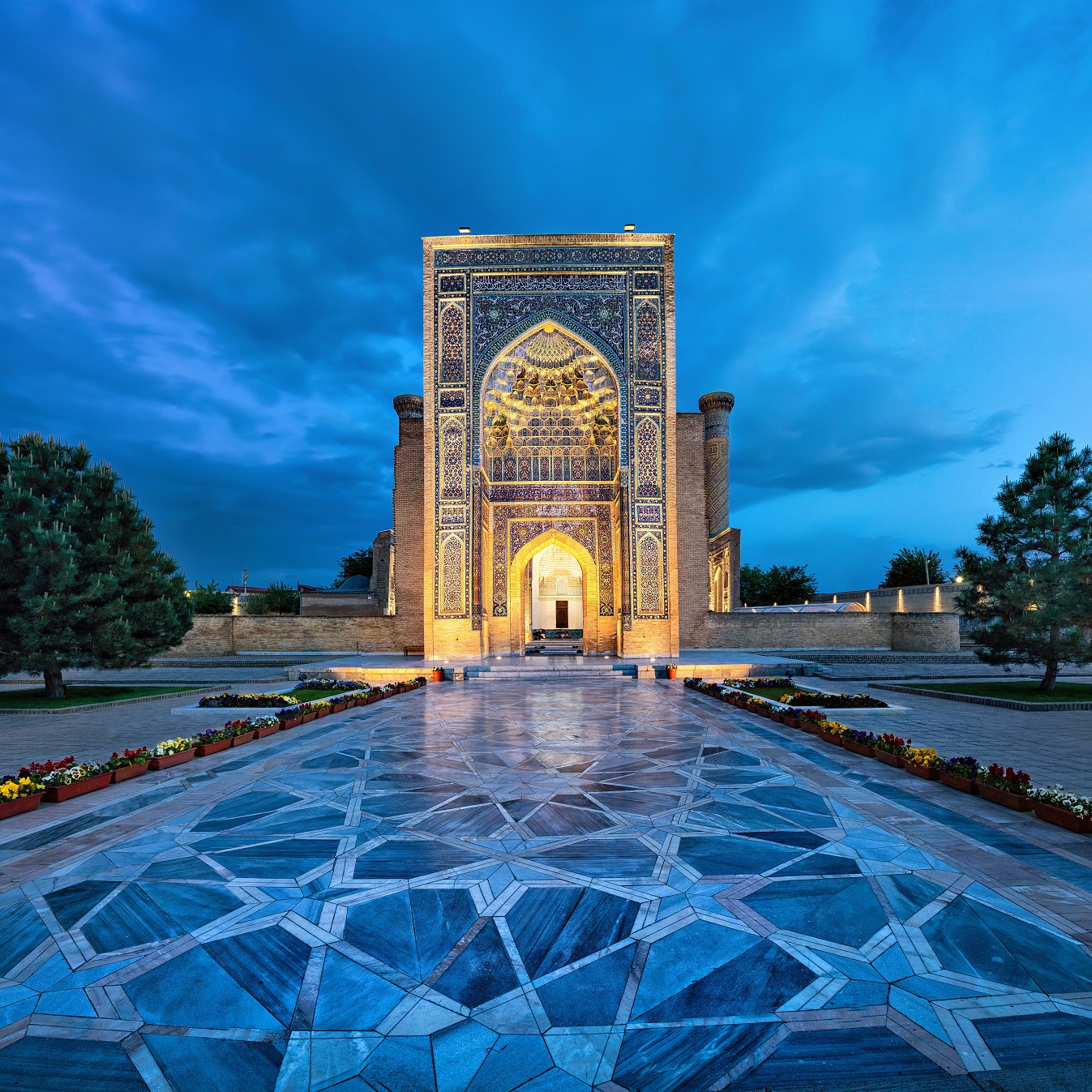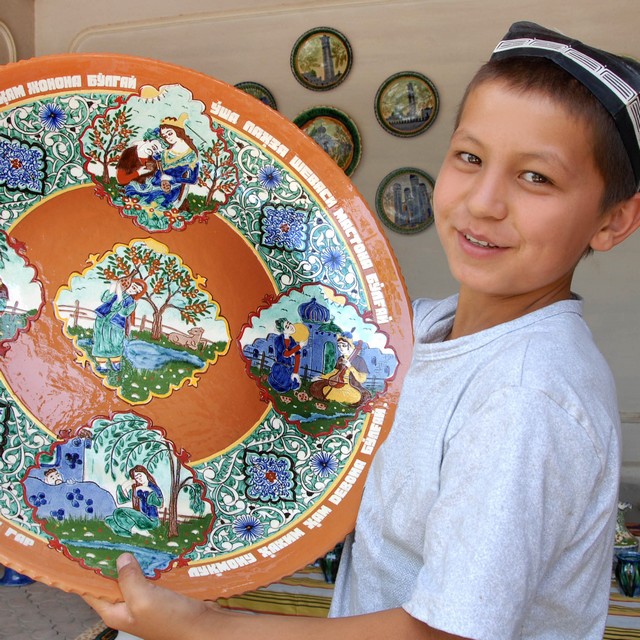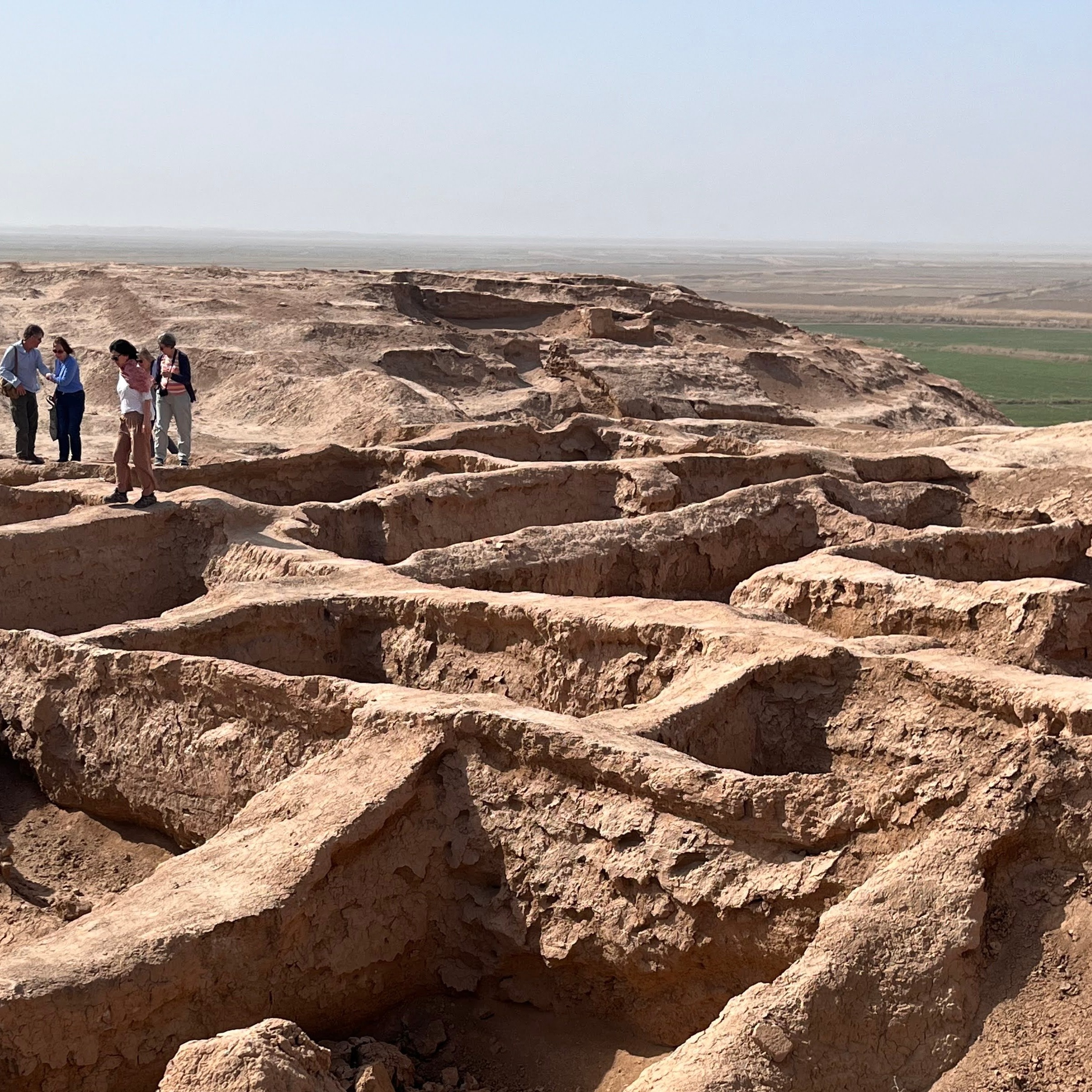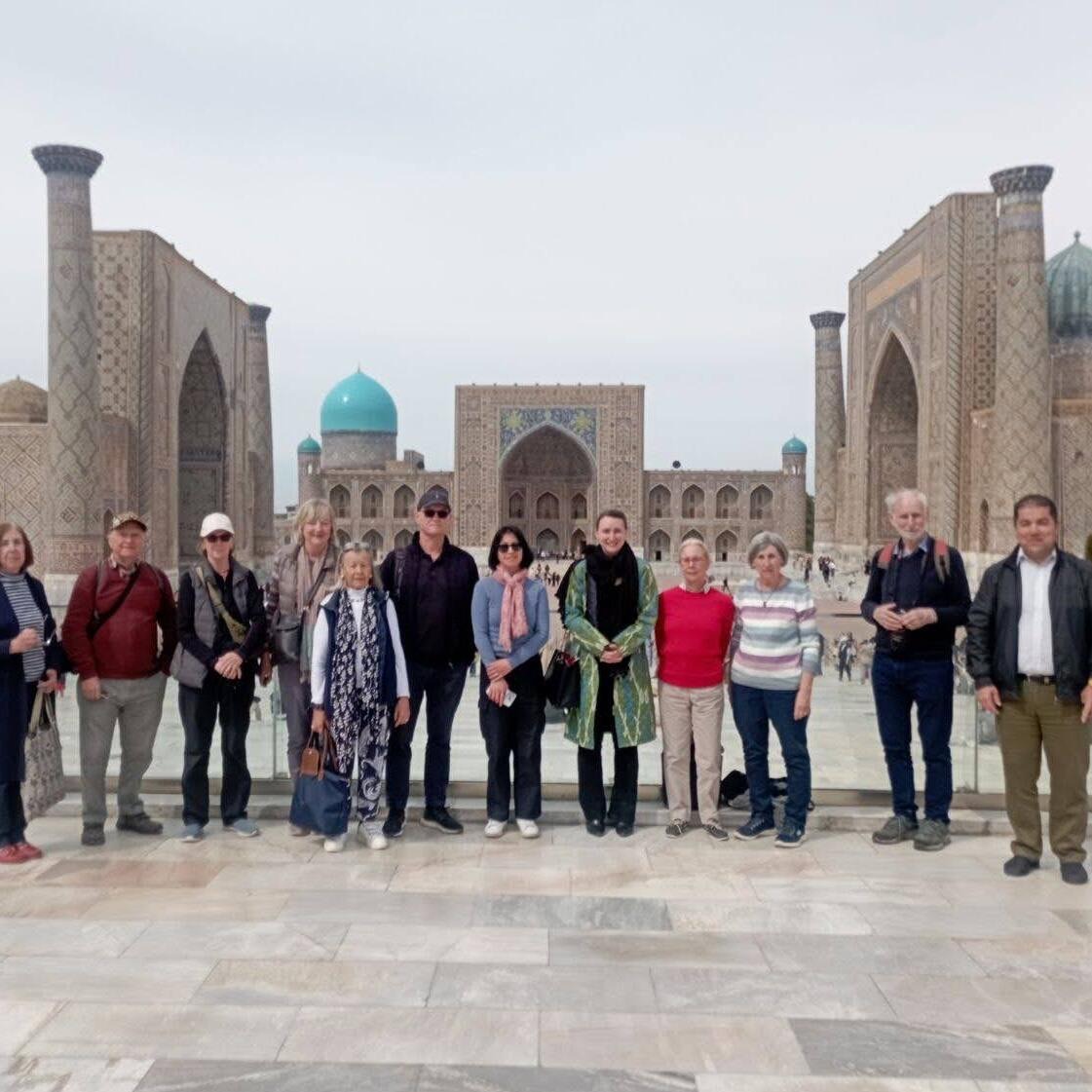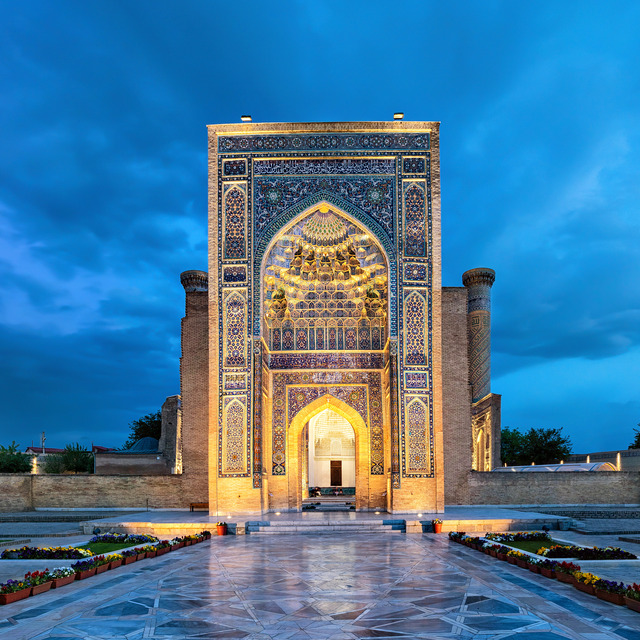Samarkand is the heart of the Silk Road, and a full day of sightseeing awaits. You will start at the magnificent Shah-i Zinda, the jewel-like royal necropolis of the Timurids, which is photogenic from every angle but best appreciated before the sun is directly overhead and the shadows become harsh. You will then see Ulugbeg’s Observatory, where Timur’s grandson made groundbreaking astronomical discoveries; and the excellent Afrosiyob Museum, with its remarkable Sogdian frescoes. You'll also visit Gur-i Amir, Amir Timur’s mausoleum; and the recently renovated Ak Seray nearby. These buildings have the most spectacular interiors in Samarkand, and are a credit to the imagination and skill of the artisans who painted them.
Lunch will be in the courtyard of a former caravanserai, a few minutes’ walk from the Registan. There will be ample time to explore Uzbekistan’s most iconic UNESCO monument, with the guide and independently, before walking along the pedestrianised street to the Bibi Khanym Mosque and Siyob Bazaar. You will then end the afternoon with free time for more sightseeing and souvenir shopping, or a visit to see weaving at the Samarkand Bukhara Silk Carpet Factory.
Dinner will be served in a city restaurant.
Overnight in Hotel Royal, Samarkand
Meal plan: Breakfast, lunch & dinner
Samarkand is one of the oldest inhabited cities in Central Asia, with evidence of human activity stretching back over 40,000 years to the late Paleolithic era. The city itself is 2,700 years old. Falling variously under Greek, Persian, Arab, Turkic and Mongol rule throughout its history, it prospered greatly as a key junction on the Silk Road and reached its golden age under the rule of Timur. The city's backdrop of madrassas, mosques and mausoleums highlights its rich medieval history. Today it is Uzbekistan's second largest city and was granted UNESCO World Heritage status in 2001.
Registan Square lies at the heart of the city of Samarkand. Three of the square’s four sides are framed by grand madrassa buildings that were built between the 14th and 16th centuries, each with a unique design that displays traditional oriental architecture. All were active until the 1920s, when the Soviets shut them down. Registan translates to “sandy place”, as the central square was covered by sand and functioned largely as a trading market before the three madrassas were built.
Gur-e-Amir is the mausoleum of Timur (a.k.a. Tamarlane) and his male ancestors. The tomb was built in 1403 for Timur’s favorite grandson, Mohammad Sultan, but also became his own, after he died suddenly of pneumonia on his way to conquer China at the age of 69. The grand entrance to the mausoleum features ornately carved bricks and mosaics, whilst the interior displays a high-domed chamber decorated with hand-painted niches and archways. Stalin dug up Timur’s bones in 1941 to prove it was indeed him, despite Timur’s warnings to those who would disturb him. The next day Nazi Germany invaded the Soviet Union!
Built in 1399 by Timur to commemorate his conquest of India and named after his favourite wife, the Bibi Khanum mosque was the largest mosque in the world until the Blue Mosque in Constantinople eclipsed it in the early 15th century. Earthquakes and weathering caused it to fall to ruins, but it has undergone extensive reconstruction efforts, which are still ongoing. The restored main chamber and minarets feature beautifully ornate details and decorative mosaics, whilst just outside visitors can see the symbolic statue of a Koran stand.
